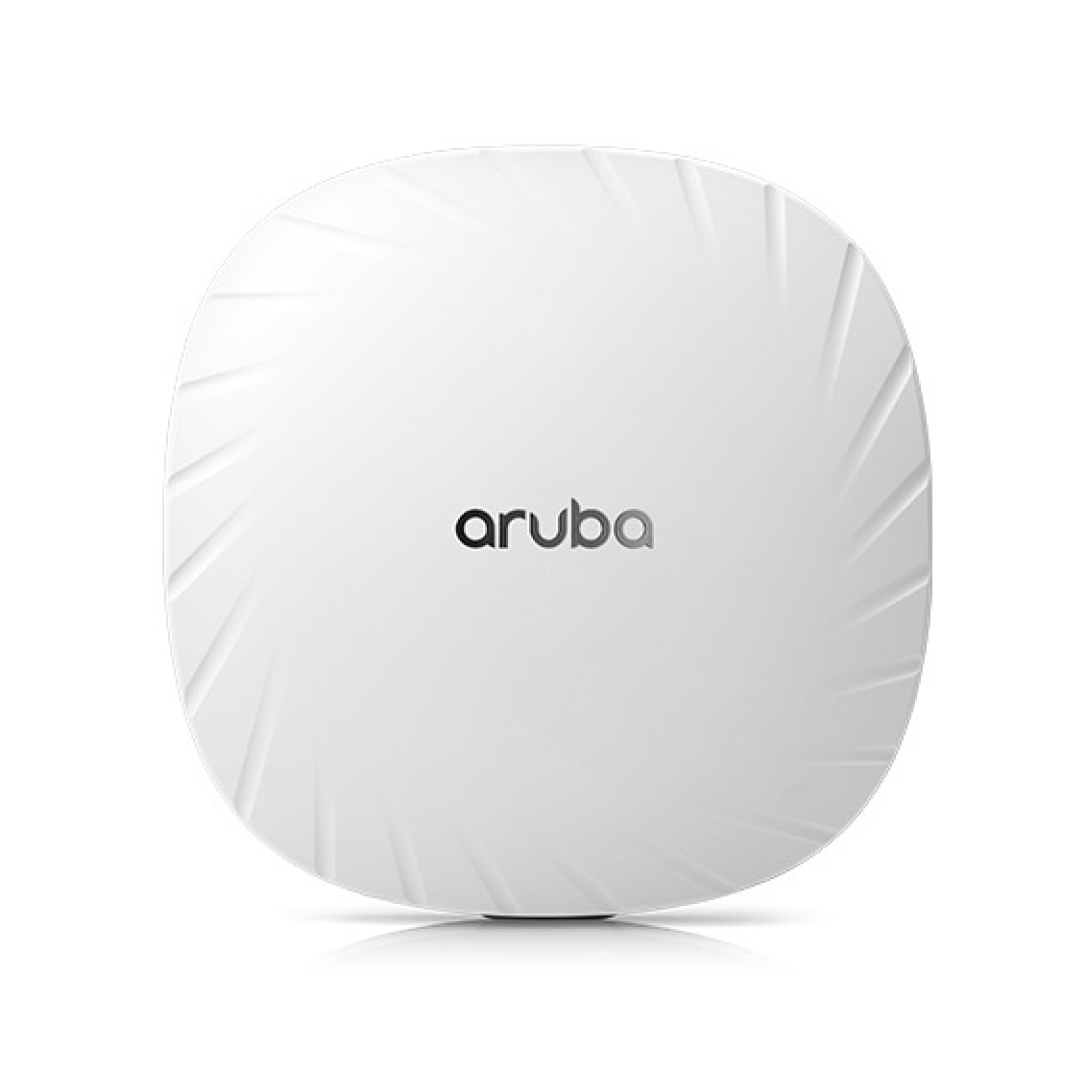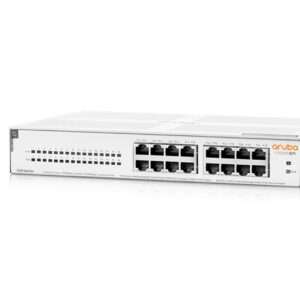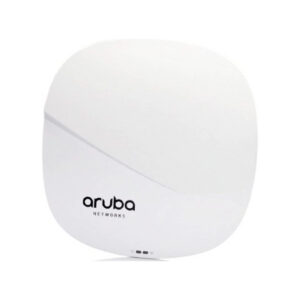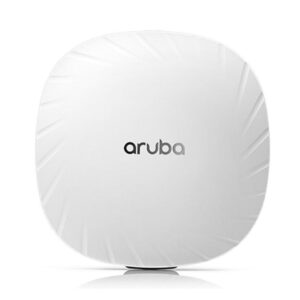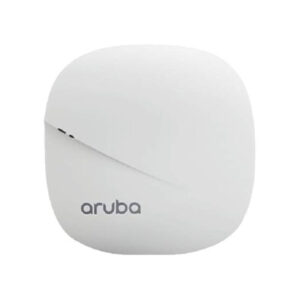Level up your business with Stack Link
Aruba 510 SERIES
Features
Wi-Fi 6 (802.11ax) Technology
Multi-User MIMO (MU-MIMO) and OFDMA for High-Density Environments
Dual-Band Operation (2.4 GHz and 5 GHz)
Integrated IoT Support with Bluetooth Low Energy (BLE)
Advanced WPA3 Security and Enhanced Encryption
General Specifications
- Model: Aruba 510 Series Access Point
- Form Factor: Indoor deployment
- Deployment Options: High-density indoor environments
- Power Input: 48V DC (via PoE) or 12V DC (external power supply)
- Power Consumption: Maximum 25.3W
- Operating Temperature: 0°C to 50°C (32°F to 122°F)
Aruba 510 SERIES
Features
Wi-Fi 6 (802.11ax) Technology
Multi-User MIMO (MU-MIMO) and OFDMA for High-Density Environments
Dual-Band Operation (2.4 GHz and 5 GHz)
Integrated IoT Support with Bluetooth Low Energy (BLE)
Advanced WPA3 Security and Enhanced Encryption
General Specifications
- Model: Aruba 510 Series Access Point
- Form Factor: Indoor deployment
- Deployment Options: High-density indoor environments
- Power Input: 48V DC (via PoE) or 12V DC (external power supply)
- Power Consumption: Maximum 25.3W
- Operating Temperature: 0°C to 50°C (32°F to 122°F)
Product Details
The Aruba 510 Series Access Point is a high-performance wireless solution built for next-generation connectivity needs. Supporting 802.11ax (Wi-Fi 6), the 510 Series offers ultra-fast speeds, improved network capacity, and enhanced efficiency for high-density environments. Ideal for enterprises, campuses, and public venues, it features Multi-User MIMO (MU-MIMO), OFDMA, and advanced power-saving technologies. With integrated security features, IoT support, and centralized management capabilities, the Aruba 510 Series ensures seamless connectivity for modern networks.
Specifications Table
| Category | Specification |
|---|---|
| Model | Aruba 510 Series Access Point |
| Form Factor | Indoor deployment |
| Wireless Standards | IEEE 802.11a/b/g/n/ac/ax |
| Frequency Bands | Dual-band 2.4 GHz and 5 GHz |
| Maximum Throughput | Up to 4.8 Gbps (5 GHz) and 575 Mbps (2.4 GHz) |
| MIMO Technology | 4×4:4 MU-MIMO |
| Channel Bandwidth | 20, 40, 80, 160 MHz |
| Transmit Power | Configurable for optimal performance |
| Ethernet Ports | 1 x 2.5 Gbps Ethernet and 1 x 1 Gbps Ethernet |
| PoE Support | IEEE 802.3at/bt for power and data over a single cable |
| Authentication | WPA2/WPA3, 802.1X, and MAC-based authentication |
| Encryption | Advanced Encryption Standard (AES) |
| Access Control | Role-based access control |
| Firewall | Integrated Layer 4-7 firewall |
| Management Options | Aruba Central (Cloud-based), On-premises Mobility Controller |
| Monitoring | Real-time performance and usage tracking |
| IoT Support | Built-in BLE (Bluetooth Low Energy) |
| Guest Wi-Fi | Secure onboarding for guests |
| Quality of Service | Prioritizes voice, video, and critical applications |
| Operating Temperature | 0°C to 50°C (32°F to 122°F) |
| Operating Humidity | 5% to 93% non-condensing |
| Dimensions | 200 mm x 200 mm x 40 mm (7.87 in x 7.87 in x 1.57 in) |
| Weight | 700 g (1.54 lbs) |
| Mounting Options | Ceiling or wall-mount (mounting kit included) |
| Certifications | FCC, CE, IC, UL, RoHS |
| Safety Standards | Meets global safety and regulatory compliance |
| Power Input | 48V DC (via PoE) or 12V DC (external power supply) |
| Power Consumption | Maximum 25.3W |

